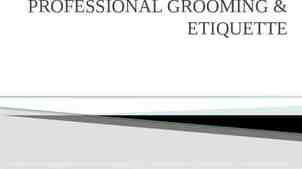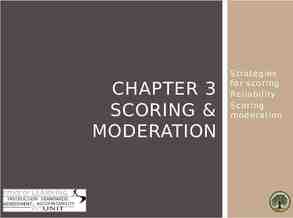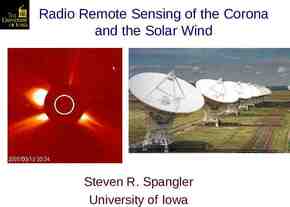CERT Basic Training
34 Slides2.97 MB

CERT Basic Training

CERT Basic Training Unit 6: Fire Safety and Utility Controls

Unit Objectives 6 1. Explain the role CERTs play in fire safety and response, including the CERT size-up process and minimum safety precautions 2. Extinguish a small fire using a fire extinguisher 3. Identify and reduce potential fire, utility, and hazardous materials hazards at home and in the community PM 6-1 CERT Basic Training Unit 6: Fire Safety and Utility Controls 6-1

Role of CERTs CERTs play very important role in fire safety by: ‒ Extinguishing small fires ‒ Preventing additional fires by removing fuel sources ‒ Shutting off utilities ‒ Assisting with evacuations, when necessary PM 6-1 CERT Basic Training Unit 6: Fire Safety and Utility Controls 6-2

CERT Priorities Rescuer safety is number one priority ‒ Always work with a buddy ‒ Always wear safety equipment CERT Goal: Do the greatest good for the greatest number PM 6-1 CERT Basic Training Unit 6: Fire Safety and Utility Controls 6-3

The Fire Triangle PM 6-3 CERT Basic Training Unit 6: Fire Safety and Utility Controls 6-4

Classes of Fire Class A: Ordinary combustibles Class B: Flammable and combustible liquids Class C: Energized electrical equipment Class D: Combustible metals Class K: Cooking oils PM 6-3 CERT Basic Training Unit 6: Fire Safety and Utility Controls 6-5

CERT Fire Size-up Helps CERT volunteers decide: ‒ Whether to attempt to suppress a fire ‒ A plan of action Answers these questions: ‒ Do my buddy and I have the right equipment? ‒ Are there other hazards? ‒ Is the building structurally damaged? ‒ Can my buddy and I escape? ‒ Can my buddy and I fight the fire safely? Remember: The safety of individual CERT volunteers is always the top priority PM 6-4 CERT Basic Training Unit 6: Fire Safety and Utility Controls 6-6

Firefighting Resources Local fire department Fire alarm system Sprinkler systems Portable fire extinguishers Interior wet standpipes PM 6-7 CERT Basic Training Unit 6: Fire Safety and Utility Controls 6-7

Fire Extinguishers Water Dry chemical Carbon dioxide Specialized PM 6-7 CERT Basic Training Unit 6: Fire Safety and Utility Controls 6-8

Extinguisher Rating/Labeling Labels show types of fires for which that extinguisher is used ‒ Class A fire ratings: 1A to 40A ‒ Class B fire ratings: 1B to 640B Higher number on label greater amount of extinguishing agent PM 6-8 CERT Basic Training Unit 6: Fire Safety and Utility Controls 6-9

Sample Label PM 6-8 CERT Basic Training Unit 6: Fire Safety and Utility Controls 6-10

P.A.S.S. Test the extinguisher after pulling the pin PM 6-11 CERT Basic Training Unit 6: Fire Safety and Utility Controls 6-11

Interior Wet Standpipes Usually found in commercial buildings or apartments CERT volunteers should not operate PM 6-11 CERT Basic Training Unit 6: Fire Safety and Utility Controls 6-12

Fire Suppression Safety Safety of individual CERT members is top priority PM 6-12 CERT Basic Training Unit 6: Fire Safety and Utility Controls 6-13

Fire Suppression Dont’s Don’t get too close Don’t try to fight a fire alone Don’t try to suppress large fires Don’t enter smoke-filled areas PM 6-12 CERT Basic Training Unit 6: Fire Safety and Utility Controls 6-14

Reducing Electrical Hazards Avoid the “electrical octopus” Don’t run cords under carpets Check for and replace broken or frayed cords Maintain appliances PM 6-14 CERT Basic Training Unit 6: Fire Safety and Utility Controls 6-15

Electrical Emergencies Know where power shutoffs are ‒ Appliances ‒ Circuit breakers ‒ Fuses Post shutoff directions next to all utilities Know procedures for turning power back on after the fire PM 6-14 CERT Basic Training Unit 6: Fire Safety and Utility Controls 6-16

Shutoff Procedures Circuit box with shutoff Fuse box with shutoff PM 6-14 CERT Basic Training Unit 6: Fire Safety and Utility Controls 6-17

Natural Gas Hazards Asphyxiant ‒ Displaces oxygen in the body Explosive ‒ Can readily ignite under the right conditions PM 6-15 CERT Basic Training Unit 6: Fire Safety and Utility Controls 6-18

Natural Gas Hazard Awareness Install natural gas detector Install carbon monoxide detector in home Test batteries for natural gas and carbon monoxide detectors every month ‒ Change batteries every six months Locate and label gas shutoffs ‒ Have proper non-sparking tool PM 6-15 CERT Basic Training Unit 6: Fire Safety and Utility Controls 6-19

Gas Shutoff Locate and label gas shutoff valves If not automatic, know procedures for shutting off gas PM 6-16 CERT Basic Training Unit 6: Fire Safety and Utility Controls 6-20

L.I.E.S. Always read labels Use L.I.E.S. storage procedures ‒ (Limit, Isolate, Eliminate, Separate) PM 6-17 CERT Basic Training Unit 6: Fire Safety and Utility Controls 6-21

Hazardous Materials Corrode other materials Explode or are easily ignited React strongly with water Are unstable when exposed to heat or shock Are otherwise toxic to humans, animals, or the environment through absorption, inhalation, injection, or ingestion PM 6-18 CERT Basic Training Unit 6: Fire Safety and Utility Controls 6-22

Identifying Stored Hazardous Materials PM 6-19 CERT Basic Training Unit 6: Fire Safety and Utility Controls 6-23

The White Quadrant NFPA 704 Diamond White Quadrant: ‒ W: Shows unusual reactivity with water ‒ OX: Possesses oxidizing properties PM 6-19 CERT Basic Training Unit 6: Fire Safety and Utility Controls 6-24

STOP! CERT Basic Training Unit 6: Fire Safety and Utility Controls 6-25

Global Harmonized System PM 6-20 CERT Basic Training Unit 6: Fire Safety and Utility Controls 6-26

HazMats in Transit PM 6-21 CERT Basic Training Unit 6: Fire Safety and Utility Controls 6-27

UN and NA Placards PM 6-21 CERT Basic Training Unit 6: Fire Safety and Utility Controls 6-28

Greater Than 1? Remember: All hazardous material placards are a stop sign for CERT volunteers! CERT Basic Training Unit 6: Fire Safety and Utility Controls 6-29

Exercise 6.1 Practice using a portable fire extinguisher to suppress a small fire Apply teamwork to fire suppression PM 6-22 CERT Basic Training Unit 6: Fire Safety and Utility Controls 6-30

Unit Summary (Unit 6) You should know: ‒ Keys to effective fire suppression ‒ Classes of fire and types of fire extinguishers ‒ P.A.S.S. ‒ How to identify hazardous materials Always follow the safety rules established for CERTs. Personal safety comes first! PM 6-23 CERT Basic Training Unit 6: Fire Safety and Utility Controls 6-31

Homework Assignment (Unit 6) Read unit to be covered in next session Bring necessary supplies to next session Wear appropriate clothes to next session PM 6-23 CERT Basic Training Unit 6: Fire Safety and Utility Controls 6-32






